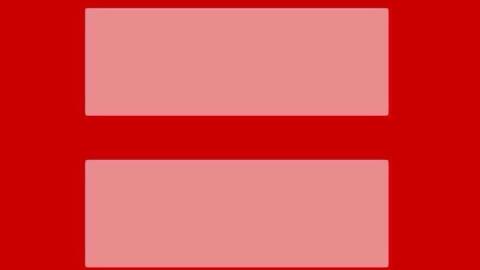The Red Equal Sign: How The Modern Family is Evolving

If you went on Facebook yesterday, it may have appeared that everyone’s profile had suddenly gotten hacked. Your timeline was probably awash in a sea of red equal signs or some variation thereof. What was this wildly viral meme? It was a powerful social media charge organized by the Human Rights Campaign, an organization in support of gay marriage.
With the Supreme Court hearing two arguments in regards to California’s Proposition 8 and the National Defense of Marriage Act gay-rights cases this week, the focus is all on marriage rights, and times have changed. According to a recent ABC News poll, 58% of americans favor gay marriage today, while only 32% were for it in 2004.
This sea change in sentiment reflects the changing nature of the modern family. While not entirely disappearing, the growth rate of traditional families is declining. According to the U.S. Census Bureau, husband-wife families with their own children under 18 years old shrunk by five percent between 2000 and 2010. And what is replacing mom, dad and 2.5 kids? All kinds of families. Shifting social norms, combined with an economic downturn is reconfiguring the cast members of the family unit.
Here are a just a few statistics about the modern family:
25% of same-sex American households are raising children.
Over 12 million households are headed by single parents.
in 2010, 5.4 million children lived in a household headed by a grandparent, up from 4.7 million in 2005.
Sandwich Families: 1 of every 8 Americans aged 40-60 is both caring for a child (often an adult child), and caring for a parent.
Co-parenting: A growing movement of unromantically-involved couples who come together to have children. There are 5 million adults in the U.S. in their mid-30s and above who are single, childless, yet still want to become parents.
Friends as family: Growing numbers of people (young and old) are entering into permanent roommate living situations, where groups of friends take the place of a traditional family.
Professional aunts, no kids (PANKs), the emerging demographic of child-loving women who do not have children of their own, represents approximately 23 million; one in five women is a PANK.
So what does this all mean to the business that wants to serve families in 2013? Although the core needs of the family unit are not changing (everyone still needs to be fed, clothed, sheltered and loved), new needs, habits and pain points are arising. Differing primary caregivers, splintered living situations, schedules and shrinking family budgets all diversify the challenges and opportunities in the space.
To learn more about the modern family, download our new slideshare presentation here.
sparks & honey is a next generation agency that helps brands synchronize with culture. Follow us on Twitter at @sparksandhoney to stay up to date on the latest, high energy trends.





